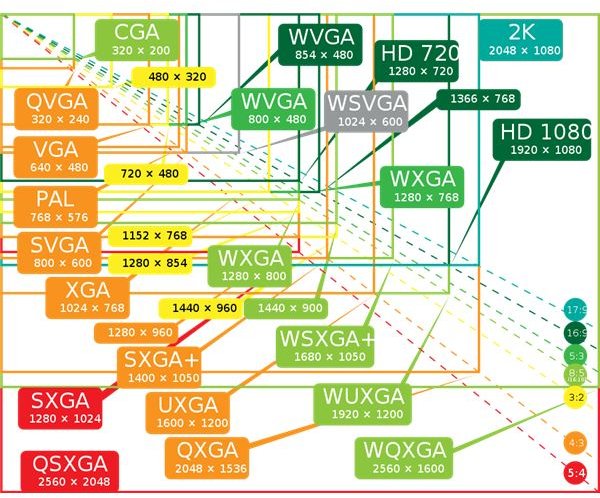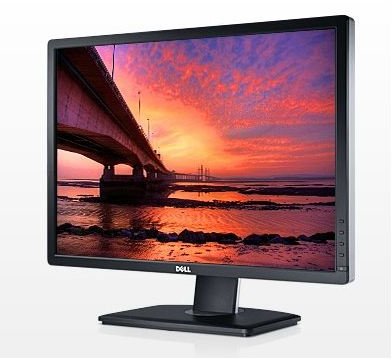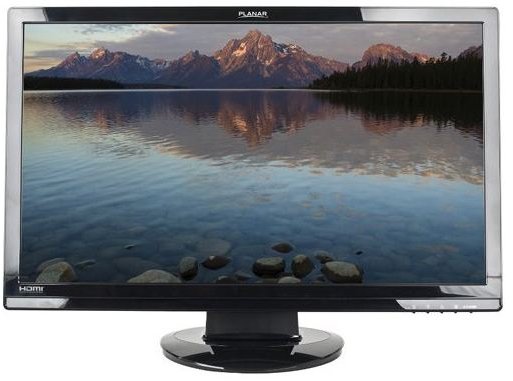The Holiday Monitor Shopping Guide
Low Prices, Great Monitors
Monitor prices seem to be on a slow but continual march downwards, and it’s not just prices that are making them a better value. Features have also improved, resulting in better image quality and improved connectivity without any increase in pricing.
Indeed, it is now possible to purchase some fairly advanced features on a budget of $200 or $300 dollars; increasing your budget to $500 will allow you to purchase a display that is at the head of the class. Let’s have a look at what is available and what characteristics you should look for when buying.
Sizing Up
The lower prices of computer monitors have resulted in size having less impact on monitor pricing than it used to. Most large monitors once cost more than those that were smaller, regardless of features. Now, however, there is more to the final price than just the size (although that still has an impact).
As a result, this is a good time to size up to a larger monitor. Those on a $200 budget, for example, can easily pick up a 24-inch monitor from ASUS or Acer for as little as $179.99. It’s not as these monitors are skimping on features, either. They offer 1080p resolution as well as HDMI input, making them easy to connect to most computers.
You don’t need to increase your budget much if you would like to go larger. 27-inch monitors are readily available for less than $300 online, and again, the features are not entirely skimped. You will at least receive 1080p with HDMI, and often you’ll receive multiple HDMI ports and built-in speakers.
There’s more to a monitor than sheer size, of course. Big-and-cheap displays usually don’t offer the best image quality. It’s hard to argue with the value that’s provided by such a larger monitor at such a low price, however, particularly when so many users don’t need a monitor that’s great for movies or games. Going big is particularly wise for home office and family computers, where the extra screen real-estate can make web pages, photos and documents much more pleasurable.
1080p is Everywhere
It was inevitable, I suppose, for 1080p to become the dominant display resolution for computer monitors. It’s an easy-to-understand resolution for consumers, which goes a long way when talking about a product as complex as a monitor. As a result, 1080p is now everywhere.
Indeed, it is so prevalent that finding a monitor with a panel size of 21 inches or above without 1080p is a challenge, even when looking at low-priced monitors. The high resolution offered on small computer monitors does offer many advantages, but it also has some disadvantages that should be noted.
One is the readability of text for those with poor sight. A 21-inch monitor with 1080p is going to have rather small text by default because of the small size of each individual pixel on the display. If you are buying for an older person, you might want to hunt for a monitor with a lower native resolution. Alternatively, you can compensate for the higher resolution by using the text size options found in Windows.
Another issue affects gamers. In order to run games at a native resolution of 1080p, more graphics processing power will be required than if the game ran at a lower resolution. If you upgrade to a 1080p monitor, but don’t upgrade your video card, you may find that games do not run as well as they did before. You can solve this problem by knocking the game’s resolution back down to where it was previously, or by purchasing a new video card.
Beyond 1080p

Once you start looking at monitors with a display size of 27 inches or above, you may start running into products that offer a display resolution above 1080p. Usually this resolution is 2560x1440 or 2560x1600. Both resolutions are significantly larger in terms of raw pixels than 1080p.
- 1080p: 2073600 pixels
- 2560x1440: 3686400 pixels
- 2560x1600: 4096000 pixels
What this means is that you’ll need a fairly beefy video card if you want to play any games at the native display resolution. This also means that 1080p HD video will actually play in a minimized form at its native resolution on these displays, and will have to be stretched in order to fill up the entire screen.
The monitors with these resolutions are usually expensive, high-end displays aimed at image editing professionals and serious image quality buffs. They’re not the type of display that you would usually give to someone as a gift - unless you already know that they are a bit of a monitor guru. If that’s the case, nothing else is likely to satisfy them.
The Power of IPS

Most of the computer monitors on sale this holiday season are, like those before them, based on what is called a TN panel. These display panels are known for being cheap to produce, and they can change color extremely quickly. However, they have extremely poor viewing angles and usually don’t offer great color reproduction. They’re adequate, but not great.
If you are looking to go a step above, you’ll want to consider an IPS display. This technology greatly reduces the viewing angle issues common with LCD monitors and offers more accurate color reproduction. Movie and game buffs tends to like this because the depth and vividness of IPS displays is rarely found elsewhere, while image editing professionals demand IPS because they can work with an image as it truly appears, rather than an approximation.
There are some disadvantages to IPS, however. The most notable is price. Dell’s Ultrasharp line, a well-known brand of IPS displays, starts at about $500 for the least expensive 24-inch IPS monitor. Other companies such as ASUS have entered the fray with their own IPS monitors, but you won’t save much by choosing them. If you want a quality IPS display, you will have to spend a substantial chunk of change.
Another common problem is response times. When an action is taken on a computer, a certain amount of time is required for it to be reflected on a monitor. IPS displays are a little slower than TN panel displays, and the slowest IPS displays have been known to annoy gamers because of a perception of lag between their actions and what happens on the display. This is a product-by-product issue, however, and only hardcore action gamers would ever notice.
Brands - Not Such a Big Deal
Now that you have reviewed our information about display size, resolution and type, you should have a better idea of what you would like to purchase. Perhaps you’ve decided on an inexpensive 21-inch 1080p display, or maybe you are going to buy a monster 27-inch IPS display for a significant other with a digital photography fetish.
Either way, you will need to narrow down your selection. One way people often do this is brand. When it comes to monitors, however, brand often doesn’t matter as much as you’d think.
There is a wide variety of choices available from companies like Samsung, ASUS, Acer, HP, NEC, Viewsonic, LG and many more. Most of these options are perfectly acceptable, but all of the brands have had duds from time to time. Rather than trying to buy by brand, it is a better idea to reader individual monitor reviews. It’s also a good idea to have a look at the monitors in person, if possible.
Brand might matter only if you are looking for a high-end IPS display. Dell is known to be a reigning champion there, but ASUS and HP also have footholds. You’ll probably want to avoid NEC, not because the displays are of poor quality, but because they are extremely expensive relative to what you receive.
Conclusion
Whatever you decide on, this holiday season is a great time to purchase, even if you already have a working display. The prices are low, and it’s easy to pick up a very large monitor with 1080p for peanuts. Remember - computer hardware upgrades may make your PC quicker, but without a quality display that you can use to enjoy your PC, all of that power may be going to waste.
References
- CNET: ASUS PA246Q Review http://reviews.cnet.com/lcd-monitors/asus-pa246q/4505-3174_7-34505604.html?tag=rb_content;contentBody
- CNET: Samsung PX2370 Review http://reviews.cnet.com/lcd-monitors/samsung-px2370/4505-3174_7-34048108.html?tag=rb_content;contentBody
- CNET: Dell UltraSharp U2711 Review http://reviews.cnet.com/lcd-monitors/dell-ultrasharp-u2711/4505-3174_7-33913833.html?tag=rb_content;contentBody
- Image Credit: Dell (Manufacturer) http://www.dell.com/content/products/superview.aspx?c=us&cs=19&l=en&pageoverride=gallery_view1&s=dhs&xdb=Z2xvYmFsOnByb2R1Y3RzOm1vbml0b3JzOnN1cGVydmlldzptb25pdG9yLWRlbGwtdTI0MTJtI3JlZ2lvbg==
- Wikipedia: Display Resolution http://en.wikipedia.org/wiki/Display_resolution
- Image Credit: Planar (Manufacturer) http://www.planar.com/?_kk=f1fee1a0-09c3-4bd2-8d18-a8601ffe528c&_kt=8781821340&gclid=COWGvNfJ3KsCFcQKKgodkmArOA
